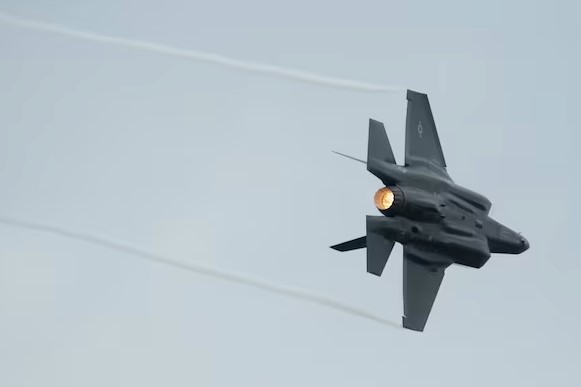Spain has officially dropped its plan to buy F-35 fighter jets, according to a report by the Spanish newspaper El Pais. These fighter jets are made by Lockheed Martin, a major U.S. defense company. The decision comes after the Spanish government had allocated a significant amount—6.25 billion euros (about $7.24 billion)—in its 2023 defense budget to modernize its air force.
Budget Constraints Force Spain to Cancel F-35 Fighter Jet Deal
The F-35 was expected to be part of Spain’s new fleet of advanced military aircraft. Known for its cutting-edge stealth technology, speed, and ability to perform multiple roles, the F-35 is one of the most modern fighter jets in the world. Many NATO member countries have already added it to their air forces, making Spain’s decision to walk away from the deal especially notable.
However, government officials chose to shift priorities. Instead of using the funds for U.S.-made aircraft, Spain will now spend the majority of its increased defense budget—10.5 billion euros—within Europe. This means supporting European defense companies and regional partnerships instead of foreign suppliers.
Spain’s navy rejects the F-35 and nuclear tech in dramatic shift toward independence
This move effectively rules out the F-35, as it is produced entirely outside of Europe. Even though the jet offers advanced technology and fits well with NATO systems, the high costs and foreign production led Spanish leaders to step back.
F-35 Purchase Collides With NATO Spending Commitments
Spain’s decision to cancel the F-35 purchase also reflects its position within NATO, the alliance of European and North American countries focused on mutual defense. NATO has a guideline that each member country should spend 2% of its gross domestic product (GDP) on defense. Spain is currently increasing its military budget to meet that goal.
Earlier this year, Spain’s government confirmed that it would raise defense spending in response to rising global tensions and pressure from NATO allies. However, during a NATO summit in June, Spain rejected proposals to raise its spending further to 5% of GDP.
This decision led to criticism from key allies, especially the United States, which has urged NATO members to share more of the defense burden. In response to Spain’s refusal, there were reports of increased trade tensions, with threats of additional tariffs on Spanish exports.
🛡️ NATO unity rattled as Spain defies 5% defense pledge, Trump threatens sanctions
The F-35 deal, with its high price tag, may have been too costly under these circumstances. The high initial cost, along with the long-term maintenance and operational expenses of the F-35, likely influenced the Spanish government to stop the deal. The government chose to focus instead on more cost-effective options within Europe.
Several European countries are already developing joint defense projects, including fighter jet programs and missile systems. By redirecting funds, Spain aims to strengthen these local partnerships while staying within budget limits.
Silence from Officials and Industry
Despite the detailed report from El Pais, neither Spain’s Ministry of Defence nor Lockheed Martin has issued a formal response to the cancellation of the F-35 deal. Their silence has left room for speculation, but the report suggests that the decision is final and based entirely on current financial and strategic priorities.
NATO and other allied forces widely use the F-35, and it plays a significant role in modern air combat. Its versatility allows it to perform surveillance, air-to-air combat, and ground-attack missions. Yet, despite its strengths, the jet comes with a high cost of ownership. Training, spare parts, and specialized equipment all add to the long-term expenses.
Spain’s Silent Rebellion: The Lone Holdout in NATO’s 5% Defence Revolution
Spain’s exit from the F-35 program marks a shift in how the country approaches defense procurement. While many of its NATO partners continue to invest in American systems like the F-35, Spain is taking a different path—one that focuses on spending within the European region.
For now, it remains unclear which specific European defense systems will replace the F-35 in Spain’s modernization plans. However, the move aligns with the country’s strategy to build defense capabilities using resources that support its economy and regional defense industry.
